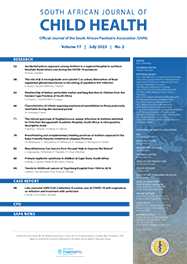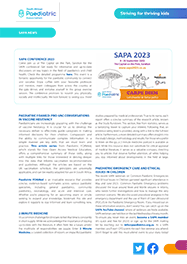Articles

Ambient solar UV radiation and seasonal trends in potential sunburn risk among schoolchildren in South Africa
Abstract
Method. To estimate national potential child sunburn risk patterns, monitored ambient solar UV radiation levels at six sites in South Africa were converted into possible schoolchild solar UV radiation exposures by calculating the theoretical child exposure to 5% of the total daily ambient solar UV radiation as derived from personal child exposure studies.
Results. Schoolgoing children with skin types I, II and III were identified as being at greatest risk of sunburn. There were 44 and 99 days in a year when schoolchildren with skin type III (moderately sensitive) living in Durban and De Aar, respectively, would be likely to experience sunburn. Schoolchildren with skin type I (extremely sensitive) were at risk of experiencing sunburn on 166 days in De Aar, and those with skin types I and II were at risk on at least 1 day per year at all six locations.
Conclusion. Seasonal patterns show that schoolchildren with sensitive skin types may experience sunburn in spring, summer and autumn months. Differences in child sunburn risk were evident, mainly due to latitude and atmospheric aerosols. Additional factors affecting sunburn risk include schoolchildren’s use of sun protection, sun-exposed activity, and timing and duration of exposure. Understanding risk patterns and obtaining locally relevant information will assist South African skin cancer prevention and sun protection awareness campaigns.
Authors' affiliations
C Y Wright, CSIR
G Coetzee, South African Weather Service
K Ncongwane, South African Weather Service
Full Text
Keywords
Cite this article
Article History
Date published: 2011-06-29
Article Views
Full text views: 1712

.jpg)



Comments on this article
*Read our policy for posting comments here